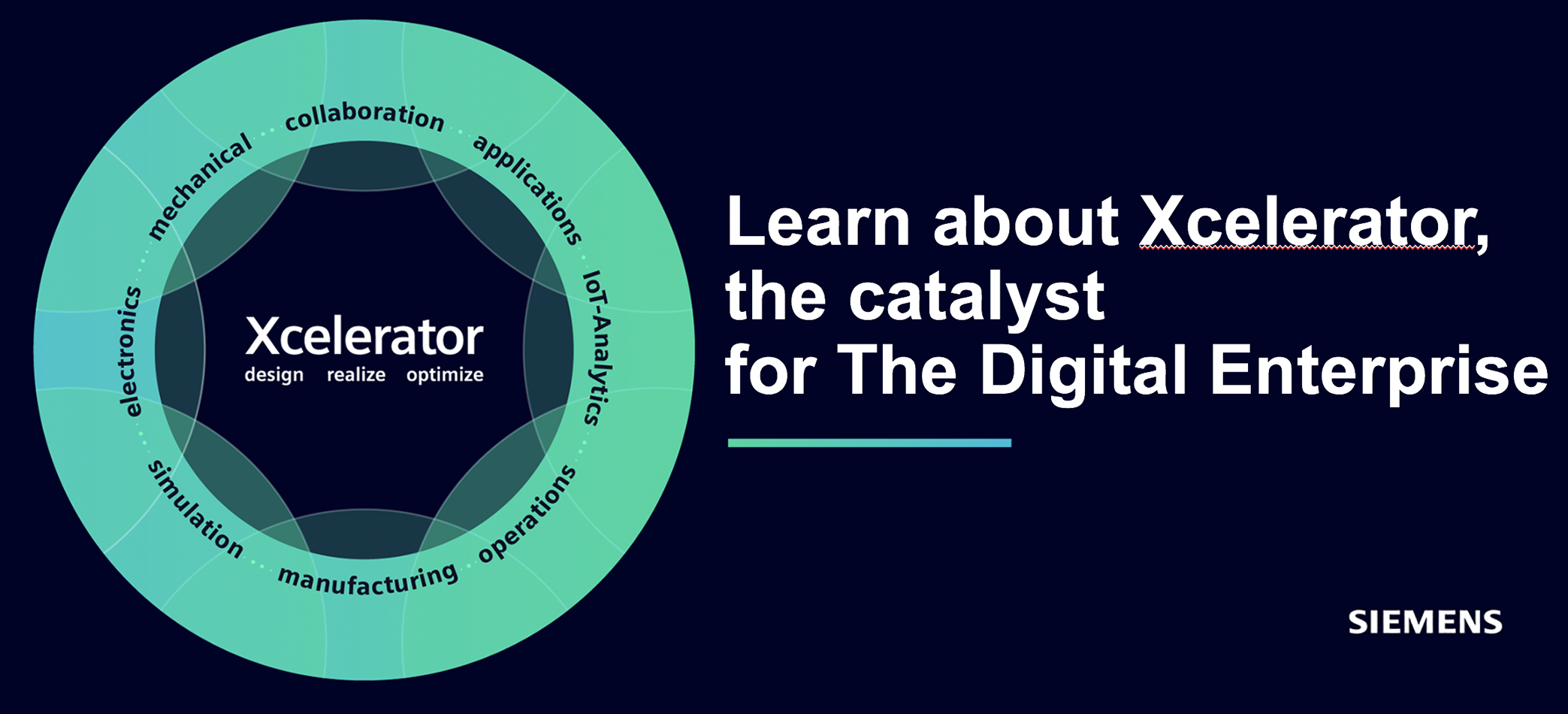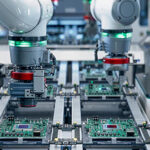ABB tar hem största ordern någonsin på system för axelgeneratorer med permanentmagneter
SKA INTEGRERAS I 30 LNG-FARTYG. ABB ska leverera och integrera permanentmagnetiska axelgeneratorsystem till 30 fartyg för transport av flytande naturgas Liquified Natural Gas – LNG) som ska byggas i Kina och Sydkorea. Beställningarna innebär att den svensk-schweiziska verkstadsjätten tar hem den största leveransen någonsin för sin axelgeneratorlösning. Fartygen ska levereras mellan 2028 och 2030.
En tung poäng med ABBs axelgeneratorteknik är att den bidrar till att minska både fartygens driftskostnader och utsläpp. Med permanentmagneter förbättras driftseffektiviteten genom att utnyttja kraften från huvudmotorn vilket ger en bättre bränsleekonomi jämfört med lösningar där kraften tillhandahålls av hjälpmotorer. Genom att undvika att starta högvarviga bränslekrävande hjälpmotorer under en resa kan fartygsoperatörer uppnå denna betydligt högre bränsleeffektivitet. Lösningen med permanentmagnetaxel-generatorer ger dessutom bättre verkningsgrad än både induktionsmaskiner och elektriskt magnetiserade synkronmaskiner, både vid full och partiell belastning.
“Detta är de största kombinerade beställningarna någonsin för våra permanentmagnetaxelgenerator-system, med leveranser av LNG-tankfartyg till flera AMEA-ägare från skeppsbyggare i Kina och Sydkorea, ” säger Michael Christensen, globalt ansvarig för segmentet lastfartyg, ABB Marine & Ports. “Dessa avtal inkluderar förstagångskunder för vårt system, vilket ytterligare bekräftar dess fördelar över ett brett spektrum av lastfartygstyper för att tillgodose sjöfartens behov av förbättrad bränsleeffektivitet som minskar driftskostnaderna och hjälper dem att uppfylla kraven på minskade koldioxidutsläpp.”
Enligt ABBs uppskattning kan företagets permanentmagnetaxelgeneratorsystem sänka bränslekostnaderna med upp till fyra procent jämfört med konventionella lösningar. I kombination med ABB:s avancerade omriktar- och styrsystem ACS880, som säkerställer maximal flexibilitet och funktionalitet i hybridapplikationer, kan tekniken öka bränsleeffektiviteten med ytterligare en procent.
Klicka på rubriken för att läsa mer på PLM&ERP News.
En tung poäng med ABBs axelgeneratorteknik är att den bidrar till att minska både fartygens driftskostnader och utsläpp. Med permanentmagneter förbättras driftseffektiviteten genom att utnyttja kraften från huvudmotorn vilket ger en bättre bränsleekonomi jämfört med lösningar där kraften tillhandahålls av hjälpmotorer. Genom att undvika att starta högvarviga bränslekrävande hjälpmotorer under en resa kan fartygsoperatörer uppnå denna betydligt högre bränsleeffektivitet. Lösningen med permanentmagnetaxel-generatorer ger dessutom bättre verkningsgrad än både induktionsmaskiner och elektriskt magnetiserade synkronmaskiner, både vid full och partiell belastning.
“Detta är de största kombinerade beställningarna någonsin för våra permanentmagnetaxelgenerator-system, med leveranser av LNG-tankfartyg till flera AMEA-ägare från skeppsbyggare i Kina och Sydkorea, ” säger Michael Christensen, globalt ansvarig för segmentet lastfartyg, ABB Marine & Ports. “Dessa avtal inkluderar förstagångskunder för vårt system, vilket ytterligare bekräftar dess fördelar över ett brett spektrum av lastfartygstyper för att tillgodose sjöfartens behov av förbättrad bränsleeffektivitet som minskar driftskostnaderna och hjälper dem att uppfylla kraven på minskade koldioxidutsläpp.”
Enligt ABBs uppskattning kan företagets permanentmagnetaxelgeneratorsystem sänka bränslekostnaderna med upp till fyra procent jämfört med konventionella lösningar. I kombination med ABB:s avancerade omriktar- och styrsystem ACS880, som säkerställer maximal flexibilitet och funktionalitet i hybridapplikationer, kan tekniken öka bränsleeffektiviteten med ytterligare en procent.
Klicka på rubriken för att läsa mer på PLM&ERP News.
Simulation & Analysis: A Sneak Peek at the New 2502 Version of Siemens’ CFD...
Meet OLA DAHLIN, business unit manager, Simcenter solutions. PLM&ERP News has gotten a sneak peek at the updated 2025.2 version of STAR-CCM+. It’s about Siemens Digital Industries Software’s CFD flagship in the Simulation & Analysis (S&A) portfolio, Simcenter. Ola Dahlin says, “it’s a long-awaited update to our multiphysics CFD platform, which streamlines the work of handling difficult physics or connecting multiple disciplines with each other in the analysis to gain deeper insights into a product’s function and performance.”
The domain is generally growing rapidly. Siemens’ Simcenter platform is no exception. The company does not disclose the PLM division’s revenue broken down by domain, but analysts we spoke to believe that the Simcenter portfolio, measured in revenue, currently represents values close to the company’s CAD revenue. Of course, the CAD side is significantly larger in terms of the number of licenses, but the S&A seats, due to their capabilities to solve complex problems, cost significantly more per license. But overall, this says something about the importance of simulation in general and STAR-CCM+ in particular.
The program ended up with Siemens in connection with the 2016 purchase of CD-adapco. This multiphysics CFD (Computational Fluid Dynamics) software makes it possible to model complexity and digitally explore how products work in real physical conditions. But the solution also has an integral finite element solver (FEA) for studying solid mechanics, fluid-structure interaction, heat conduction and thermal stress problems. This broad usability has made STAR-CCM+ almost a standard tool on the CFD side in most of the world's automotive companies; BMW, Mercedes, Volvo Cars, Volvo Trucks and Scania are some examples. But the software also has strong positions in aerospace & defense (e.g. Boeing and Saab), oil & gas (e.g. Aker offshore), engines for marine and heavy industrial equipment (Wärtsilä), food equipment (Tetra Pak), etc.
Ola Dahlin further says that STAR-CCM+ benefits from the growth of trends around electrification, aerospace, defense and medical technology, as well as sustainability.
In the now updated 2025.2 version, he highlights, among other things, additional functionality in "Stages" - a method for performing different steps in flow analyses, where different solvers are used. "In practical terms, this means that you can divide the analysis into steps with, for example, a static analysis and a subsequent time-resolved part, without having to set up the analysis again, a more efficient way of working. What is now coming is the possibility of using this in our coupled fluid and energy solver. Another new feature is that GPU acceleration can now be applied to cases with moving objects (e.g. wheels in aerodynamics) and for SPH (the particle solver in STAR-CCM+). But there is also exciting news when it comes to vehicle bodies.” What is it about?
Click on the headline to read the full story on PLM&ERP News.
The domain is generally growing rapidly. Siemens’ Simcenter platform is no exception. The company does not disclose the PLM division’s revenue broken down by domain, but analysts we spoke to believe that the Simcenter portfolio, measured in revenue, currently represents values close to the company’s CAD revenue. Of course, the CAD side is significantly larger in terms of the number of licenses, but the S&A seats, due to their capabilities to solve complex problems, cost significantly more per license. But overall, this says something about the importance of simulation in general and STAR-CCM+ in particular.
The program ended up with Siemens in connection with the 2016 purchase of CD-adapco. This multiphysics CFD (Computational Fluid Dynamics) software makes it possible to model complexity and digitally explore how products work in real physical conditions. But the solution also has an integral finite element solver (FEA) for studying solid mechanics, fluid-structure interaction, heat conduction and thermal stress problems. This broad usability has made STAR-CCM+ almost a standard tool on the CFD side in most of the world's automotive companies; BMW, Mercedes, Volvo Cars, Volvo Trucks and Scania are some examples. But the software also has strong positions in aerospace & defense (e.g. Boeing and Saab), oil & gas (e.g. Aker offshore), engines for marine and heavy industrial equipment (Wärtsilä), food equipment (Tetra Pak), etc.
Ola Dahlin further says that STAR-CCM+ benefits from the growth of trends around electrification, aerospace, defense and medical technology, as well as sustainability.
In the now updated 2025.2 version, he highlights, among other things, additional functionality in "Stages" - a method for performing different steps in flow analyses, where different solvers are used. "In practical terms, this means that you can divide the analysis into steps with, for example, a static analysis and a subsequent time-resolved part, without having to set up the analysis again, a more efficient way of working. What is now coming is the possibility of using this in our coupled fluid and energy solver. Another new feature is that GPU acceleration can now be applied to cases with moving objects (e.g. wheels in aerodynamics) and for SPH (the particle solver in STAR-CCM+). But there is also exciting news when it comes to vehicle bodies.” What is it about?
Click on the headline to read the full story on PLM&ERP News.
Simulering & Analys: En tjuvtitt på nya 2502-versionen av Siemens CFD-flaggskepp STAR-CCM+
Möt OLA DAHLIN, affärsansvarig för Simcenter-lösningarna. PLM&ERP News har fått en tjuvtitt på den uppdaterade 2025.2-versionen av STAR-CCM+. Det handlar alltså om Siemens Digital Industries Softwares flaggskepp i Simulerings & Analys-portföljen (S&A), Simcenter. OLA DAHLIN konstaterar att, ”det är en efterlängtad uppdatering av vår multifysiska CFD-plattform, som effektiviserar arbetet med att hantera svår fysik eller att koppla ihop flera discipliner med varandra i analysen för att få djupare insikter i en produkts funktion och prestanda.”
Till saken hör att domänen generellt växer så det knakar. Siemens’ Simcenter-plattform är inget undantag. Bolaget avslöjar inte PLM-divisionens intäkter nedbrutet i domäner, men analytiker som jag talat med menar att Simcenter-portföljen, räknat i intäkter, idag i runda svängar representerar värden i närheten av bolagets CAD-intäkter. Givetvis är CAD-sidan betydligt större sett till antalet licenser, men S&A-sätena kostar i kraft av sina kapaciteter att lösa komplexa problem å andra sidan betydligt mer per licens. Men övergripande säger detta dock något om betydelsen av simulering i allmänhet och STAR-CCM+ i synnerhet.
Programmet hamnade hos Siemens i samband med köpet 2016 av CD-adapco. Denna multifysik CFD-mjukvara (”flödesdynamik”) gör det möjligt att modellera komplexitet och digitalt utforska hur produkter fungerar under verkliga fysiska förhållanden. Men lösningen har också en integral finita element-lösare (FEA) för studier av solid mekanik, vätskestruktur-interaktion, värmeledning och termiska spänningsproblem. Denna breda användbarhet har gjort STAR-CCM+ till närmast ett standardverktyg på CFD-sidan i de flesta av världens automotive-företag; BMW, Mercedes, Volvo Cars, Volvo Lastvagnar och Scania är några exempel. Men även inom flyg & försvar (t ex Boeing och Saab), olja & gas (t ex Aker offshore), motorer för marina- och tunga industriutrustningar (Wärtsilä), livsmedelsutrustningar (Tetra Pak), etc, har mjukvaran starka positioner.
Ola Dahlin säger vidare att STAR-CCM+ gynnas i tillväxten av trender kring elektrifiering, flyg-, försvars- och medicinteknik, samt hållbarhet.
I den nu uppdaterade 2025.2-versionen framhåller han bl a ytterligare funktionalitet i ”Stages” - en metod för att utföra olika steg i flödesanalyser, där olika lösare används.
”Praktiskt sett betyder detta att man kan dela upp analysen i steg med t ex en statisk analys och en efterföljande tidsupplöst del, utan att behöva sätta upp analysen på nytt, ett effektivare arbetssätt. Det som nu kommer är möjlighet att använda detta för vår kopplade fluid- och energilösare. Annat nytt är att GPU accelerering nu går att applicera på fall med rörliga objekt (t ex hjul inom aerodynamik) och för SPH (partikellösaren i STAR-CCM+). Men även när det gäller fordonskarosser kommer spännande nyheter.” Vilka då?
Klicka på rubriken för att läsa mer på PLM&ERP News.
Till saken hör att domänen generellt växer så det knakar. Siemens’ Simcenter-plattform är inget undantag. Bolaget avslöjar inte PLM-divisionens intäkter nedbrutet i domäner, men analytiker som jag talat med menar att Simcenter-portföljen, räknat i intäkter, idag i runda svängar representerar värden i närheten av bolagets CAD-intäkter. Givetvis är CAD-sidan betydligt större sett till antalet licenser, men S&A-sätena kostar i kraft av sina kapaciteter att lösa komplexa problem å andra sidan betydligt mer per licens. Men övergripande säger detta dock något om betydelsen av simulering i allmänhet och STAR-CCM+ i synnerhet.
Programmet hamnade hos Siemens i samband med köpet 2016 av CD-adapco. Denna multifysik CFD-mjukvara (”flödesdynamik”) gör det möjligt att modellera komplexitet och digitalt utforska hur produkter fungerar under verkliga fysiska förhållanden. Men lösningen har också en integral finita element-lösare (FEA) för studier av solid mekanik, vätskestruktur-interaktion, värmeledning och termiska spänningsproblem. Denna breda användbarhet har gjort STAR-CCM+ till närmast ett standardverktyg på CFD-sidan i de flesta av världens automotive-företag; BMW, Mercedes, Volvo Cars, Volvo Lastvagnar och Scania är några exempel. Men även inom flyg & försvar (t ex Boeing och Saab), olja & gas (t ex Aker offshore), motorer för marina- och tunga industriutrustningar (Wärtsilä), livsmedelsutrustningar (Tetra Pak), etc, har mjukvaran starka positioner.
Ola Dahlin säger vidare att STAR-CCM+ gynnas i tillväxten av trender kring elektrifiering, flyg-, försvars- och medicinteknik, samt hållbarhet.
I den nu uppdaterade 2025.2-versionen framhåller han bl a ytterligare funktionalitet i ”Stages” - en metod för att utföra olika steg i flödesanalyser, där olika lösare används.
”Praktiskt sett betyder detta att man kan dela upp analysen i steg med t ex en statisk analys och en efterföljande tidsupplöst del, utan att behöva sätta upp analysen på nytt, ett effektivare arbetssätt. Det som nu kommer är möjlighet att använda detta för vår kopplade fluid- och energilösare. Annat nytt är att GPU accelerering nu går att applicera på fall med rörliga objekt (t ex hjul inom aerodynamik) och för SPH (partikellösaren i STAR-CCM+). Men även när det gäller fordonskarosser kommer spännande nyheter.” Vilka då?
Klicka på rubriken för att läsa mer på PLM&ERP News.
PTC’s ServiceMax: Barua’s Baby Makes a Promising Entry Into the AI Paradigm
The New AI Assistant A BOOST. AI is making its mark everywhere in the PLM and ERP world. Last week, it was time for PTC’s field service management (FSM) platform, ServiceMax, to enter the AI paradigm after months of development and beta testing. PTC’s CEO, Neil Baraua, who joined the company in connection with PTC’s 2022 acquisition of ServiceMax, had as his main merit the lift of the solution to become the market leader in FSM. With today’s AI initiative, this “Barua’s Baby” is taken even further, with one key point being that ServiceMax AI can utilize the complete, documented history of an asset stored on the platform, including equipment data, service history and known service resolutions. A reasonable outcome of this is that field service technicians will get more done in less time; undeniably a weighty argument in a world bursting with increasingly complex assets.
ServiceMax is PTC’s cloud and SaaS-based FSM software and plays an important role in the company’s overall concept of product realization, asset and maintenance management, not least linked to building DIGITAL THREADS. In general, the platform thus includes lifecycle services related to various types of assets, such as factory facilities, machine equipment and the like. The platform handles things like preventive maintenance, contracts, mobile apps for technicians and customers, advanced automation of workflows and analytics for asset health and operational profitability. How can AI help with this?
“In many ways,” ServiceMax’s GM, Joseph June, states in a blog post, pointing to, among other things, the transfer of knowledge from retired field service technicians. “It’s one of the biggest challenges our customers face, and traditional methods like manuals and knowledge management systems have not reduced this. So the use of large language models to train a system on a data set was eye-opening. We knew right away that this approach could work for ServiceMax as well. Here we are, the AI-based solution has access to all the data stored in a ServiceMax instance, interacts with technicians through natural language and an easy-to-use chat interface,” June explains.
Technicians can use ServiceMax AI Chat to get answers to questions about a specific job or asset; it can automate manual documentation and scheduling; and review recommendations for predictive maintenance.
The magic happens when these agents combine: work history, scheduling, and knowledge access. ServiceMax AI dynamically selects the most relevant agents to answer a given question, just as an experienced technician can leverage their memory and knowledge to troubleshoot. What really sets this apart is how the agents work together behind the scenes, supported by today’s AI technologies, such as retrieval-augmented generation (RAG), how then?
Click the link below to read more on PLM&ERP News.
ServiceMax is PTC’s cloud and SaaS-based FSM software and plays an important role in the company’s overall concept of product realization, asset and maintenance management, not least linked to building DIGITAL THREADS. In general, the platform thus includes lifecycle services related to various types of assets, such as factory facilities, machine equipment and the like. The platform handles things like preventive maintenance, contracts, mobile apps for technicians and customers, advanced automation of workflows and analytics for asset health and operational profitability. How can AI help with this?
“In many ways,” ServiceMax’s GM, Joseph June, states in a blog post, pointing to, among other things, the transfer of knowledge from retired field service technicians. “It’s one of the biggest challenges our customers face, and traditional methods like manuals and knowledge management systems have not reduced this. So the use of large language models to train a system on a data set was eye-opening. We knew right away that this approach could work for ServiceMax as well. Here we are, the AI-based solution has access to all the data stored in a ServiceMax instance, interacts with technicians through natural language and an easy-to-use chat interface,” June explains.
Technicians can use ServiceMax AI Chat to get answers to questions about a specific job or asset; it can automate manual documentation and scheduling; and review recommendations for predictive maintenance.
The magic happens when these agents combine: work history, scheduling, and knowledge access. ServiceMax AI dynamically selects the most relevant agents to answer a given question, just as an experienced technician can leverage their memory and knowledge to troubleshoot. What really sets this apart is how the agents work together behind the scenes, supported by today’s AI technologies, such as retrieval-augmented generation (RAG), how then?
Click the link below to read more on PLM&ERP News.
PTC’s nya ServiceMax AI: LOVANDE entré för ”Baruas Baby” inom AI-paradigmet
”Nya AI-assistenten ETT LYFT.” AI sätter inte överraskande sina fotspår överallt i PLM- och ERP-världarna. I förra veckan var det dags för PTCs fältservice-plattform, ServiceMax, att mer officiellt, efter många månader av utvecklingsarbete och kund-betatester, göra entré i AI-paradigmet. Till saken hör att PTCs CEO, Neil Baraua, som kom till bolaget i samband med PTCs köp 2022 av ServiceMax, som främsta merit hade lyftet av lösningen till att bli en marknadsledare inom fältservice-hantering (FSM). Med dagens AI-satsning tas denna "Baruas Baby" ännu kliv uppåt, bl a med en huvudpoäng i att ServiceMax AI kan utnyttja den kompletta, dokumenterade historiken för en tillgång lagrad i på plattformen, inklusive utrustningsdata, servicehistorik och kända serviceupplösningar. Ett rimligt utfall av detta är att fältservice-tekniker kommer att få mer gjort på kortare tid; onekligen ett tungt argument i en värld sprängfylld av allt komplexare tillgångar.
ServiceMax är PTC’s moln- och SaaS-baserade FSM-mjukvara och fyller en viktig funktion i den helhetskoncept kring produktframtagning- och underhållshantering som bolaget tagit fram. Allmänt inkluderar plattformen sålunda livscykel-tjänster relaterade till olika slags tillgångar, typ fabriksanläggningar, maskiner och liknande. Plattformen hanterar i detta sånt som förebyggande underhåll, kontrakt, mobilappar för tekniker och kunder, avancerad automatisering av arbetsflöden och analyser för tillgångars hälsa och operativ lönsamhet. Men hur kan AI vara behjälpligt detta?
”På många sätt,” konstaterar SerivceMax’s GM, Joseph June, i en bloggpost, och pekar på bl a kunskapsöverföringen från pensionerade fältservice-tekniker. ”Det är en av de största utmaningarna som våra kunder står inför, och traditionella metoder som manualer och kunskapshanterings-system har inte minskat detta. Så användningen av stora språkmodeller för att träna ett system på en datamängd var ögonöppnande. Vi visste direkt att detta tillvägagångssätt kunde fungera även för ServiceMax. Där är vi nu, den AI-baserade lösningen har tillgång till all data som lagras i en ServiceMax-instans, interagerar med tekniker genom naturligt språk och ett lättanvänt chattgränssnitt och slutför uppgifter genom specialiserade AI-agenter,” förklarar June.
Tekniker kan alltså använda ServiceMax AI Chat för att få svar på frågor om ett specifikt jobb eller en tillgång; den kan automatisera manuell dokumentation och schemaläggnings-uppgifter och granska proaktiva rekommendationer för prediktivt underhåll.
Magin händer när dessa agenter kombineras: Arbetshistorik, schemaläggning och kunskapsaccess. ServiceMax AI väljer dynamiskt ut de mest relevanta agenterna för att svara på en given fråga, precis som en erfaren tekniker kan utnyttja deras minne och kunskap för att felsöka ett problem. Det som verkligen skiljer detta åt är hur agenterna arbetar tillsammans bakom kulisserna, med stöd av dagens AI-tekniker, som "retrieval-augmented generation" (RAG).
Klicka på rubriken för att läsa mer på PLM&ERP News.
ServiceMax är PTC’s moln- och SaaS-baserade FSM-mjukvara och fyller en viktig funktion i den helhetskoncept kring produktframtagning- och underhållshantering som bolaget tagit fram. Allmänt inkluderar plattformen sålunda livscykel-tjänster relaterade till olika slags tillgångar, typ fabriksanläggningar, maskiner och liknande. Plattformen hanterar i detta sånt som förebyggande underhåll, kontrakt, mobilappar för tekniker och kunder, avancerad automatisering av arbetsflöden och analyser för tillgångars hälsa och operativ lönsamhet. Men hur kan AI vara behjälpligt detta?
”På många sätt,” konstaterar SerivceMax’s GM, Joseph June, i en bloggpost, och pekar på bl a kunskapsöverföringen från pensionerade fältservice-tekniker. ”Det är en av de största utmaningarna som våra kunder står inför, och traditionella metoder som manualer och kunskapshanterings-system har inte minskat detta. Så användningen av stora språkmodeller för att träna ett system på en datamängd var ögonöppnande. Vi visste direkt att detta tillvägagångssätt kunde fungera även för ServiceMax. Där är vi nu, den AI-baserade lösningen har tillgång till all data som lagras i en ServiceMax-instans, interagerar med tekniker genom naturligt språk och ett lättanvänt chattgränssnitt och slutför uppgifter genom specialiserade AI-agenter,” förklarar June.
Tekniker kan alltså använda ServiceMax AI Chat för att få svar på frågor om ett specifikt jobb eller en tillgång; den kan automatisera manuell dokumentation och schemaläggnings-uppgifter och granska proaktiva rekommendationer för prediktivt underhåll.
Magin händer när dessa agenter kombineras: Arbetshistorik, schemaläggning och kunskapsaccess. ServiceMax AI väljer dynamiskt ut de mest relevanta agenterna för att svara på en given fråga, precis som en erfaren tekniker kan utnyttja deras minne och kunskap för att felsöka ett problem. Det som verkligen skiljer detta åt är hur agenterna arbetar tillsammans bakom kulisserna, med stöd av dagens AI-tekniker, som "retrieval-augmented generation" (RAG).
Klicka på rubriken för att läsa mer på PLM&ERP News.
Välkommen satsning på HALVLEDARE: Regeringen och EU satsar 175 miljoner på att bygga upp...
Under förra veckan kom ett välkommet besked från regeringen och Tillväxtverket. Man ska med 175 miljoner kronor bidra till att Sverige får en väl fungerande kedja av företag, forskningsinstitut och resurser som kan tillverka de material och komponenter som behövs inom halvledartekniken.
Bakgrunden är att bristen på halvledare covid-19-pandemin seglade upp som en stor utmaning för svenska företag. Bristen tydliggjorde behovet av en mer robust och konkurrenskraftig inhemsk produktion, vilket inte varit en svensk industriell styrka. Bland annat pekade kritiker i kontexten på att man för att lyckas med att vässa de blågula kapaciterna i detta krävs ett sammanhållet ekosystem med starka regionala noder i världsklass som spelar en aktiv roll inom halvledarsektorn och som har ett tydligt fokus på framtidens industri. Nu är detta inget som är gjort över en natt, men de 175 miljoner man nu tänker satsa kan hjälpa till att knuffa igång en positiv utveckling.
Det är alltså Tillväxtverket som med hjälp av EU:s regionalfond ska stärka Sveriges konkurrenskraft inom halvledarindustrin. Totalt investeras 70 miljoner kronor i sex nya satsningar, som tillsammans med medfinansiering från regionala och nationella aktörer blir 175 miljoner kronor.
Satsningen genomförs i fem regionalfondsområden i Sverige: i Skåne och Blekinge, Västsverige, Stockholm, Östra Mellansverige och på nationell nivå genom Nationella regionalfondsprogrammet. Pengarna ska främja forskning och innovation, utveckla innovationsmiljöer och stärka samarbetet mellan näringsliv, akademi och offentlig sektor.
”Ett starkt och dynamiskt halvledarekosystem, där aktörer samarbetar för att stärka Sveriges position inom halvledarområdet, är viktigt för landets konkurrenskraft. I kombination med pågående investeringar banar Tillväxtverkets satsningar väg för innovation, teknikutveckling och stärkt konkurrenskraft, säger Elisabet Österlund, VD på Svensk Elektronik och projektägare i ett av projekten som beviljats medel.
Klicka på rubriken för att läsa mer på PLM&ERP News.
Bakgrunden är att bristen på halvledare covid-19-pandemin seglade upp som en stor utmaning för svenska företag. Bristen tydliggjorde behovet av en mer robust och konkurrenskraftig inhemsk produktion, vilket inte varit en svensk industriell styrka. Bland annat pekade kritiker i kontexten på att man för att lyckas med att vässa de blågula kapaciterna i detta krävs ett sammanhållet ekosystem med starka regionala noder i världsklass som spelar en aktiv roll inom halvledarsektorn och som har ett tydligt fokus på framtidens industri. Nu är detta inget som är gjort över en natt, men de 175 miljoner man nu tänker satsa kan hjälpa till att knuffa igång en positiv utveckling.
Det är alltså Tillväxtverket som med hjälp av EU:s regionalfond ska stärka Sveriges konkurrenskraft inom halvledarindustrin. Totalt investeras 70 miljoner kronor i sex nya satsningar, som tillsammans med medfinansiering från regionala och nationella aktörer blir 175 miljoner kronor.
Satsningen genomförs i fem regionalfondsområden i Sverige: i Skåne och Blekinge, Västsverige, Stockholm, Östra Mellansverige och på nationell nivå genom Nationella regionalfondsprogrammet. Pengarna ska främja forskning och innovation, utveckla innovationsmiljöer och stärka samarbetet mellan näringsliv, akademi och offentlig sektor.
”Ett starkt och dynamiskt halvledarekosystem, där aktörer samarbetar för att stärka Sveriges position inom halvledarområdet, är viktigt för landets konkurrenskraft. I kombination med pågående investeringar banar Tillväxtverkets satsningar väg för innovation, teknikutveckling och stärkt konkurrenskraft, säger Elisabet Österlund, VD på Svensk Elektronik och projektägare i ett av projekten som beviljats medel.
Klicka på rubriken för att läsa mer på PLM&ERP News.
The Quest for Fusion Power: Can Aras PLM Help Tokamak Energy to Tackle the...
SIEMENS SOLID EDGE (CAD) and TEAMCENTER (PDM) remain BASIC DESIGN TOOLS. One of the most interesting news in the PLM area this week is the announcement from Aras PLM that its Innovator platform has been selected by the British fusion energy developer Tokamat Energy as what looks like a complementary PLM solution, mainly to support the establishment of a digital thread.
Energy as what looks like a complementary PLM solution, mainly to support the establishment of a digital thread. One of the most interesting news in the PLM area this week is the announcement from Aras PLM that the company's Innovator platform has been selected by the British fusion energy company Tokamat Energy. Fusion energy projects are generally among the most complex energy ventures made by mankind. The point is to mimic the sun's energy process, which is based on fusion where hydrogen atoms fuse together. During the fusion, two light nuclei fuse together to form a single, heavier nucleus. The process releases energy because the total mass of the resulting single nucleus is less than the mass of the two original nuclei. The excess is sent out by the sun as thermal radiation, which thus warms the Earth, among other things.
Not surprisingly, this process is associated with a number of challenging difficulties, among other things because hydrogen, heated to the approximately 100 million degrees Celsius required, transitions from a gas to a plasma where the negatively charged electrons are separated from the positively charged atomic nuclei (ions). The most famous venture is the ITER Tokamak project in France. But Tokamak Energy’s bet is something else. The company is driving the global expansion of commercial fusion energy in the 2030s through the combined development of spherical tokamaks with high-temperature superconducting (HTS) magnets.
In this technologically challenging environment, Tokamak Energy envisions PLM as the foundation for a digital thread.
“That’s right,” says MARTIN TSANG, Transformation Lead at Tokamak Energy. “PLM will enable us to establish a digital thread, which will improve our ability to connect complex fusion technology simulations to design iterations. The flexibility will also allow us to adapt and tailor our processes to reflect the complexity and stage of development of our technology.”
Tsang further claims that the flexibility and self-sufficiency capabilities of the Aras Innovator platform, as well as the platform’s low-code functionality, were key factors in the decision.
Although the now announced venture is a feather in the cap for Aras PLM, it should be noted that this is still a smaller installation in terms of number of users; the British company has just under 300 employees. On the other hand, it is Tokamak Energy's first enterprise-wide PLM implementation beyond CAD design and PDM, where they work in Solid Edge and Teamcenter.
Anyway, the high level of technology complexity is undisputable - how?
The solution will be delivered under a SaaS (Software-as-a-Service) agreement.
Click on the headline to read the full article on PLM&ERP News.
Energy as what looks like a complementary PLM solution, mainly to support the establishment of a digital thread. One of the most interesting news in the PLM area this week is the announcement from Aras PLM that the company's Innovator platform has been selected by the British fusion energy company Tokamat Energy. Fusion energy projects are generally among the most complex energy ventures made by mankind. The point is to mimic the sun's energy process, which is based on fusion where hydrogen atoms fuse together. During the fusion, two light nuclei fuse together to form a single, heavier nucleus. The process releases energy because the total mass of the resulting single nucleus is less than the mass of the two original nuclei. The excess is sent out by the sun as thermal radiation, which thus warms the Earth, among other things.
Not surprisingly, this process is associated with a number of challenging difficulties, among other things because hydrogen, heated to the approximately 100 million degrees Celsius required, transitions from a gas to a plasma where the negatively charged electrons are separated from the positively charged atomic nuclei (ions). The most famous venture is the ITER Tokamak project in France. But Tokamak Energy’s bet is something else. The company is driving the global expansion of commercial fusion energy in the 2030s through the combined development of spherical tokamaks with high-temperature superconducting (HTS) magnets.
In this technologically challenging environment, Tokamak Energy envisions PLM as the foundation for a digital thread.
“That’s right,” says MARTIN TSANG, Transformation Lead at Tokamak Energy. “PLM will enable us to establish a digital thread, which will improve our ability to connect complex fusion technology simulations to design iterations. The flexibility will also allow us to adapt and tailor our processes to reflect the complexity and stage of development of our technology.”
Tsang further claims that the flexibility and self-sufficiency capabilities of the Aras Innovator platform, as well as the platform’s low-code functionality, were key factors in the decision.
Although the now announced venture is a feather in the cap for Aras PLM, it should be noted that this is still a smaller installation in terms of number of users; the British company has just under 300 employees. On the other hand, it is Tokamak Energy's first enterprise-wide PLM implementation beyond CAD design and PDM, where they work in Solid Edge and Teamcenter.
Anyway, the high level of technology complexity is undisputable - how?
The solution will be delivered under a SaaS (Software-as-a-Service) agreement.
Click on the headline to read the full article on PLM&ERP News.
FUSIONSENERGI: Aras PLM-plattform ska hjälpa Tokamak Energy att få igång den DIGITALA TRÅDEN
Satsar på INNOVATOR som SaaS-lösning för att påskynda utvecklingen av kommersiell fusionsenergi. En av veckans mest intressanta nyheter på PLM-området är beskedet från Aras PLM att bolagets Innovator-plattform valts av brittiska fusionsenergi-satsningen Tokamat Energy.
Projekten kring fusionsenergi tillhör allmänt de mest komplexa energisatsningar som gjorts av människan. Poängen är att efterlikna solens energiprocess, som bygger på fusionen där väteatomer smälter samman. Vid sammanslagningen smälter två lätta kärnor samman för att bilda en enda tyngre kärna. Processen frigör energi eftersom den totala massan av den resulterande enda kärnan är mindre än massan av de två ursprungliga kärnorna. Överskottet skickar solen ut som värmestrålning, vilket alltså bl a värmer upp jorden. Denna process är förenad med en rad utmanande svårigheter, bl a för att väte, uppvärmt till de runt 100 miljoner grader Celsius som krävs, övergår från en gas till ett plasma där de negativt laddade elektronerna separeras från de positivt laddade atomkärnorna (jonerna). Mest känt är ITER Tokamak-projektet i Frankrike, som drogs igång 2013. Men Tokamak Energy är något annat. Företaget driver den globala utbyggnaden av kommersiell fusionsenergi under 2030-talet genom den kombinerade utvecklingen av sfäriska tokamaks med högtemperatur-supraledande (HTS) magneter.
I denna teknologiskt utmanande miljö tänker man sig från Tokamak Energys sida att PLM framför allt ska bli grunden för en digital tråd.
"Så är det. PLM kommer att göra det möjligt för oss att etablera en digital tråd, vilket förbättrar vår förmåga att koppla samman komplex fusionsteknik-simulering till designiterationer. Flexibiliteten kommer också att göra det möjligt för oss att anpassa och skräddarsy våra processer för att återspegla komplexiteten och utvecklingsstadiet för vår teknologi," säger Martin Tsang, Transformation Lead på Tokamak Energy.
Tsang konstaterar vidare att det först och främst var Aras Innovator-plattforms flexibilitet och kapabiliteter att stödja självförsörjning, liksom plattformens lågkodsfunktionalitet, som var nyckelfaktorer i beslutet.
"Den snabbt utvecklande karaktären av vårt arbete med utveckling av fusionsteknologi kräver en PLM-plattform som snabbt kan anpassa sig till nya möjligheter och marknader. Aras tillåter vårt team att självständigt utveckla funktionalitet och utöka vår kapacitet utan de extra kostnader som vanligtvis förknippas med modulära PLM-system,” tillade han.
Även om den nu annonserade satsningen är en fjäder i hatten för Aras PLM, ska man minnas att det fortfarande rör sig om en användarmässigt mindre installation med ett par dryga hundratal användare. Men det är i alla fall Tokamak Energys första företagsomfattande PLM-implementering bortom CAD-design och PDM, där bolaget arbetar i Siemens Solid Edge (CAD)-och Teamcenter (PDM)-miljö, vilket allt pekar mot att man kommer att fortsätta göra.
Den nya Aras PLM-lösningen levereras under ett SaaS-avtal (Software-as-a-Service-avtal).
Klicka på rubriken för att läsa mer på PLM&ERP News.
Projekten kring fusionsenergi tillhör allmänt de mest komplexa energisatsningar som gjorts av människan. Poängen är att efterlikna solens energiprocess, som bygger på fusionen där väteatomer smälter samman. Vid sammanslagningen smälter två lätta kärnor samman för att bilda en enda tyngre kärna. Processen frigör energi eftersom den totala massan av den resulterande enda kärnan är mindre än massan av de två ursprungliga kärnorna. Överskottet skickar solen ut som värmestrålning, vilket alltså bl a värmer upp jorden. Denna process är förenad med en rad utmanande svårigheter, bl a för att väte, uppvärmt till de runt 100 miljoner grader Celsius som krävs, övergår från en gas till ett plasma där de negativt laddade elektronerna separeras från de positivt laddade atomkärnorna (jonerna). Mest känt är ITER Tokamak-projektet i Frankrike, som drogs igång 2013. Men Tokamak Energy är något annat. Företaget driver den globala utbyggnaden av kommersiell fusionsenergi under 2030-talet genom den kombinerade utvecklingen av sfäriska tokamaks med högtemperatur-supraledande (HTS) magneter.
I denna teknologiskt utmanande miljö tänker man sig från Tokamak Energys sida att PLM framför allt ska bli grunden för en digital tråd.
"Så är det. PLM kommer att göra det möjligt för oss att etablera en digital tråd, vilket förbättrar vår förmåga att koppla samman komplex fusionsteknik-simulering till designiterationer. Flexibiliteten kommer också att göra det möjligt för oss att anpassa och skräddarsy våra processer för att återspegla komplexiteten och utvecklingsstadiet för vår teknologi," säger Martin Tsang, Transformation Lead på Tokamak Energy.
Tsang konstaterar vidare att det först och främst var Aras Innovator-plattforms flexibilitet och kapabiliteter att stödja självförsörjning, liksom plattformens lågkodsfunktionalitet, som var nyckelfaktorer i beslutet.
"Den snabbt utvecklande karaktären av vårt arbete med utveckling av fusionsteknologi kräver en PLM-plattform som snabbt kan anpassa sig till nya möjligheter och marknader. Aras tillåter vårt team att självständigt utveckla funktionalitet och utöka vår kapacitet utan de extra kostnader som vanligtvis förknippas med modulära PLM-system,” tillade han.
Även om den nu annonserade satsningen är en fjäder i hatten för Aras PLM, ska man minnas att det fortfarande rör sig om en användarmässigt mindre installation med ett par dryga hundratal användare. Men det är i alla fall Tokamak Energys första företagsomfattande PLM-implementering bortom CAD-design och PDM, där bolaget arbetar i Siemens Solid Edge (CAD)-och Teamcenter (PDM)-miljö, vilket allt pekar mot att man kommer att fortsätta göra.
Den nya Aras PLM-lösningen levereras under ett SaaS-avtal (Software-as-a-Service-avtal).
Klicka på rubriken för att läsa mer på PLM&ERP News.
Honed Computational Intelligence and AI at the Forefront as ALTAIR Takes HPCWorks to a...
STRATEGICALLY SHARP enhancements that can give NEW SHARES in a market WORTH $55 BILLION - Siemens could be on to something very interesting… In several important, sometimes crucial perspectives, HPC (High-Performance Computing) can be a backbone of innovation. The point is to be able to process data and perform calculations at a rate that far exceeds computing resources in “regular” IT environments. Whether simulating complex physical systems, testing advanced digital 3D models with tens of thousands of components, or processing huge amounts of data to train large AI models, HPC relies on a mix of advanced technologies to break performance barriers. This computing power both saves a lot of time and at the same time enables scientific, business and engineering organizations to solve big problems that would otherwise be extremely tough to master. It is not difficult to see the significance of sharp HPC in an increasingly digitalized and complicated world of product development.
It is against this background, among other things, that Altair has created an interesting position as something of a global leader in computational intelligence. Under the leadership of founder James R Scapa, it has made a journey from its roots in structural analysis software such as Hypermesh to today's collection of HPC, AI, simulation and analysis software and cloud solutions that span a number of areas. Scapa and his colleagues have organically developed, purchased and integrated CAE tools rocketing Altair from a niche supplier to a globally operating CAE and HPC player in enterprise class. Where it ends remains to be seen, but there is much evidence that the bid for the company that Siemens made at the end of last year means that Altair will soon become part of the world-leading German PLM and automation group.
That said, the big news this week regarding Altair is a number of new significant upgrades to the company's cloud-based HPC platform, HPCWorks. New tools and features extend cloud scaling for Altair and third-party workload managers, integrate advanced monitoring and reporting, and more; including improved job scheduling and visualization with artificial intelligence (AI) with support for GPUs, Kubernetes and machine learning workflows.
It is clear that the platform's improved monitoring and reporting pieces, combined with AI integration through RapidMiner, can create a competitive advantage. Furthermore, the solution's pragmatic approach to supporting external workload managers is sympathetic and in its own way acknowledges that real-world computing environments are quite heterogeneous. Overall, sharp improvements in an HPC market valued at around $55 billion by 2024 (Fortune Business Insights).
“Having next-level HPC and cloud solutions is imperative in today’s data- and AI-driven landscape,” said Sam Mahalingam, Altair CTO, continuing: “Altair HPCWorks platform can push the boundaries and realize visions. Our customers have the market’s most powerful HPC and cloud platform in their toolbox.”
Click on the headline to read the full article on PLM&ERP News.
It is against this background, among other things, that Altair has created an interesting position as something of a global leader in computational intelligence. Under the leadership of founder James R Scapa, it has made a journey from its roots in structural analysis software such as Hypermesh to today's collection of HPC, AI, simulation and analysis software and cloud solutions that span a number of areas. Scapa and his colleagues have organically developed, purchased and integrated CAE tools rocketing Altair from a niche supplier to a globally operating CAE and HPC player in enterprise class. Where it ends remains to be seen, but there is much evidence that the bid for the company that Siemens made at the end of last year means that Altair will soon become part of the world-leading German PLM and automation group.
That said, the big news this week regarding Altair is a number of new significant upgrades to the company's cloud-based HPC platform, HPCWorks. New tools and features extend cloud scaling for Altair and third-party workload managers, integrate advanced monitoring and reporting, and more; including improved job scheduling and visualization with artificial intelligence (AI) with support for GPUs, Kubernetes and machine learning workflows.
It is clear that the platform's improved monitoring and reporting pieces, combined with AI integration through RapidMiner, can create a competitive advantage. Furthermore, the solution's pragmatic approach to supporting external workload managers is sympathetic and in its own way acknowledges that real-world computing environments are quite heterogeneous. Overall, sharp improvements in an HPC market valued at around $55 billion by 2024 (Fortune Business Insights).
“Having next-level HPC and cloud solutions is imperative in today’s data- and AI-driven landscape,” said Sam Mahalingam, Altair CTO, continuing: “Altair HPCWorks platform can push the boundaries and realize visions. Our customers have the market’s most powerful HPC and cloud platform in their toolbox.”
Click on the headline to read the full article on PLM&ERP News.
Beräkningsintelligens och AI i absolut framkant när Altair tar nya kliv med HPCWorks-plattformen
STRATEGISKT VASSA FÖRBÄTTRINGAR som kan ge NYA ANDELAR på en marknad VÄRD 55 MILJARDER DOLLAR - Siemens kan vara något mycket intressant på spåren. I flera viktiga, ibland avgörande perspektiv kan HPC (High-Performance Computing) sägas vara en slags innovationens ryggrad. Poängen ligger i att kunna bearbeta data och utföra beräkningar i en takt som vida överstiger datorresurser i ”vanliga” IT-miljöer. Oavsett om man simulerar komplexa fysiska system, testar avancerade digitala 3D-modeller med tiotusentals komponenter, eller bearbetar enorma mängder data för att träna stora AI-modeller, förlitar sig HPC på en blandning av avancerade tekniker för att bryta prestandabarriärer. Denna samlade datorkraft både sparar mycket tid och är samtidigt en möjliggörare för vetenskaps-, affärs- och ingenjörsorganisationer att lösa stora problem som annars skulle vara ytterligt tuffa att bemästra. Det är inte svårt att inse betydelsen av detta i en alltmer digitaliserad och komplicerad produktframtagnings-värld.
Det är bland annat i denna bakgrund som Altair skapat sig en intressant position som något av en global ledare inom beräkningsintelligens. Man har under ledning av grundaren James R Scapa gjort en utvecklingsresa från sina rötter i strukturanalys-mjukvara som Hypermesh till dagens samling HPC-, simulerings- och analys-mjukvaror och molnlösningar som spänner över en rad områden. Scapa och hans medarbetare har organiskt utvecklat, köpt och integrerat CAE-verktyg och Altair har i detta gått från nischleverantör till en globalt verksam CAE- och HPC-spelare i storföretagsklass. Vart det slutar återstår att se, men mycket talar för att det bud på bolaget som Siemens la i slutet av fjolåret betyder att Altair inom kort blir en del av den världsledande tyska PLM- och automationskoncernen.
När det gäller industrisegment är Altair traditionellt starkt inom fordons- och transportindustrin, men har under de senaste åren, främst genom förvärv, expanderat till andra segment, som högteknologisk elektronik, flyg och försvar, medicinsk utrustning och energi.
Detta sagt är veckans stora nyhet när det gäller Altair ett antal nya betydande uppgraderingar av bolagets molnbaserade HPC-plattform, HPCWorks. Nya verktyg och funktioner utökar molnskalningen för Altair och tredjeparts workload managers, integrerar avancerad övervakning och rapportering, och mer därtill; bl a förbättrad jobbschemaläggning och visualisering med artificiell intelligens (AI) med stöd för GPUer, Kubernetes och arbetsflöden för maskininlärning.
Klart är att plattformens förbättrade övervaknings- och rapporteringsbitar, i kombination med AI-integration genom RapidMiner, skapar en konkurrensfördel. Vidare är lösningens pragmatiska tillvägagångssätt i stödet för externa arbetsbelastnings-hanterare sympatiskt och innebär på sitt sätt ett erkännande av att verklighetens datormiljöer är tämligen heterogena. Sammantaget, vassa förbättringar på en HPC-marknad som värderats till kring 55 miljarder dollar 2024 (Fortune Business Insights).
”Våra senaste förbättringar av HPCWorks ger våra kunder ännu mer omfattande möjligheter att hålla sig i framkant inom beräkningsintelligens”, säger Sam Mahalingam, Altairs CTO, och fortsätter: ”Att ha HPC och molnlösningar på nästa nivå är absolut nödvändigt i dagens data- och AI-drivna landskap. Med den branschledande Altair HPCWorks-plattformen kan våra kunder tänja på gränserna och förverkliga sina visioner med vetskapen om att de har marknadens mest kraftfulla HPC- och molnplattform i sin verktygslåda.”
Klicka på rubriken för att läsa mer på PLM&ERP News.
Det är bland annat i denna bakgrund som Altair skapat sig en intressant position som något av en global ledare inom beräkningsintelligens. Man har under ledning av grundaren James R Scapa gjort en utvecklingsresa från sina rötter i strukturanalys-mjukvara som Hypermesh till dagens samling HPC-, simulerings- och analys-mjukvaror och molnlösningar som spänner över en rad områden. Scapa och hans medarbetare har organiskt utvecklat, köpt och integrerat CAE-verktyg och Altair har i detta gått från nischleverantör till en globalt verksam CAE- och HPC-spelare i storföretagsklass. Vart det slutar återstår att se, men mycket talar för att det bud på bolaget som Siemens la i slutet av fjolåret betyder att Altair inom kort blir en del av den världsledande tyska PLM- och automationskoncernen.
När det gäller industrisegment är Altair traditionellt starkt inom fordons- och transportindustrin, men har under de senaste åren, främst genom förvärv, expanderat till andra segment, som högteknologisk elektronik, flyg och försvar, medicinsk utrustning och energi.
Detta sagt är veckans stora nyhet när det gäller Altair ett antal nya betydande uppgraderingar av bolagets molnbaserade HPC-plattform, HPCWorks. Nya verktyg och funktioner utökar molnskalningen för Altair och tredjeparts workload managers, integrerar avancerad övervakning och rapportering, och mer därtill; bl a förbättrad jobbschemaläggning och visualisering med artificiell intelligens (AI) med stöd för GPUer, Kubernetes och arbetsflöden för maskininlärning.
Klart är att plattformens förbättrade övervaknings- och rapporteringsbitar, i kombination med AI-integration genom RapidMiner, skapar en konkurrensfördel. Vidare är lösningens pragmatiska tillvägagångssätt i stödet för externa arbetsbelastnings-hanterare sympatiskt och innebär på sitt sätt ett erkännande av att verklighetens datormiljöer är tämligen heterogena. Sammantaget, vassa förbättringar på en HPC-marknad som värderats till kring 55 miljarder dollar 2024 (Fortune Business Insights).
”Våra senaste förbättringar av HPCWorks ger våra kunder ännu mer omfattande möjligheter att hålla sig i framkant inom beräkningsintelligens”, säger Sam Mahalingam, Altairs CTO, och fortsätter: ”Att ha HPC och molnlösningar på nästa nivå är absolut nödvändigt i dagens data- och AI-drivna landskap. Med den branschledande Altair HPCWorks-plattformen kan våra kunder tänja på gränserna och förverkliga sina visioner med vetskapen om att de har marknadens mest kraftfulla HPC- och molnplattform i sin verktygslåda.”
Klicka på rubriken för att läsa mer på PLM&ERP News.















